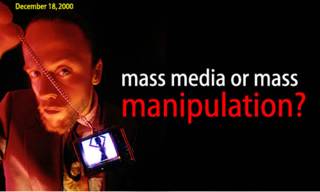The Functions of Prehistoric Art
The rock art at Valcomonica can determine and explain types and functions of art used 8,000 years ago. During that period, men carved pictures into cave walls with their dingy handmade tools. Their art was very simple- undecorative and inelaborate. Men and animals were portrayed as blank stick figures, without any expression. Other everyday objects and creatures were also roughly carved. The art lacked any emotion or beauty. However, those cave drawings are extremely important artifacts in explaining the extraordinary lifestyle and values of those mysterious cave men. Prehistoric man found it effective to carve drawings in thier caves, establishing a new scribal culture. Drawing provided them with a way to communicate by recording visual images. They basically carved pictures that captured what they saw. Like the picture of the two warriors carved on Naquane Rock, the artist wanted to express an important event. Perhaps this fight was symbolic or involved important men in the tribe. Therefore, the artist wanted to record a historical event most effectively done through artwork. Also, prehistoric art provided an opportunity for the artist to reveal what was important to him, his society and his culture. For example, the crowned figure on the Cemmo 3 Boulder, is believed to symbolize a solar god whom the cave men revered. Therefore, the artist used his artwork as a commemoration to the god. Prehistoric men may have also intended to offer a glimpse into their lifestyle for the future generations. Daggers as weaponry, huts as shelters, carts as transporting devices, etc. explain to us the simplicity of their lives. Overall, however, prehistoric art is evidence of how their minds were growing more complex. Cave men were now able to create art, a skill they have never used before. They finally activated their minds and their imagination to express what they saw and valued. This was a profound step for walking the path to establishing the next six information revolutions that would change life forever.
Today, art has a completely different meaning as well as function to us. Practically everyone, young and old, female and male from every culture expect art to be beautiful, using it for decoration in homes and offices. Artists also create work that purposely convey feeling and emotion through perhaps texture, color, and so forth. It provides them with an opportunity for free expression, an outlet for their personal thoughts and attitudes. We admire and revere such expressive artwork and like to be surrounded by such human emotion and talent. Art today also commemorates important aspects of life, similar to prehistoric art. But today, life is different, thus art content relates to more complex matter than warrior combats and animals. Today, artwork constitutes wars, important figures, monuments, among other things. Finally, art functions as a method to convince audience to posess a particular viewpoint or partake in a particular activity. Art has the ability to persuade people in, for example supporting leaders, participating in events, or accepting ideologies.
As we have seen, the function of art has transformed from 8,000 years ago. Technology has advanced the way in which we create art from carving on caves to painting, sculpting, digital designing on a variety of mediums. Our modern and civilized lifestyle has transformed art from simple topography and rough carvings to more complicated art creations. Consequently, the function and the meaning that we associate to today's art have been radically altered.
Today, art has a completely different meaning as well as function to us. Practically everyone, young and old, female and male from every culture expect art to be beautiful, using it for decoration in homes and offices. Artists also create work that purposely convey feeling and emotion through perhaps texture, color, and so forth. It provides them with an opportunity for free expression, an outlet for their personal thoughts and attitudes. We admire and revere such expressive artwork and like to be surrounded by such human emotion and talent. Art today also commemorates important aspects of life, similar to prehistoric art. But today, life is different, thus art content relates to more complex matter than warrior combats and animals. Today, artwork constitutes wars, important figures, monuments, among other things. Finally, art functions as a method to convince audience to posess a particular viewpoint or partake in a particular activity. Art has the ability to persuade people in, for example supporting leaders, participating in events, or accepting ideologies.
As we have seen, the function of art has transformed from 8,000 years ago. Technology has advanced the way in which we create art from carving on caves to painting, sculpting, digital designing on a variety of mediums. Our modern and civilized lifestyle has transformed art from simple topography and rough carvings to more complicated art creations. Consequently, the function and the meaning that we associate to today's art have been radically altered.



